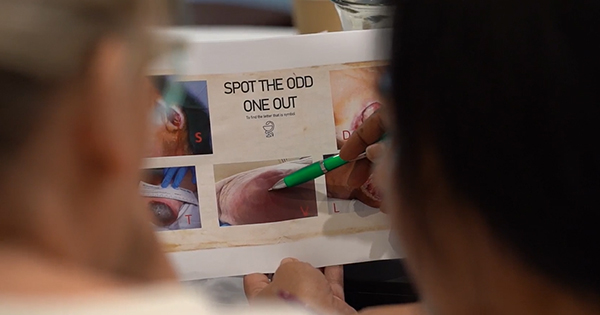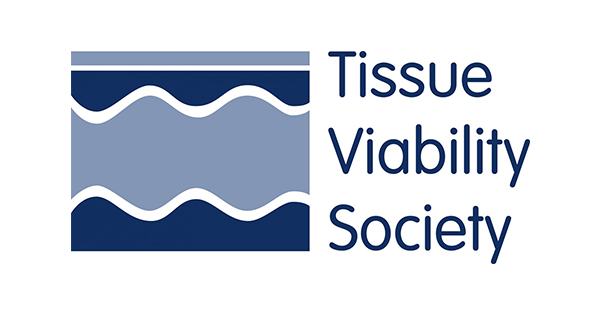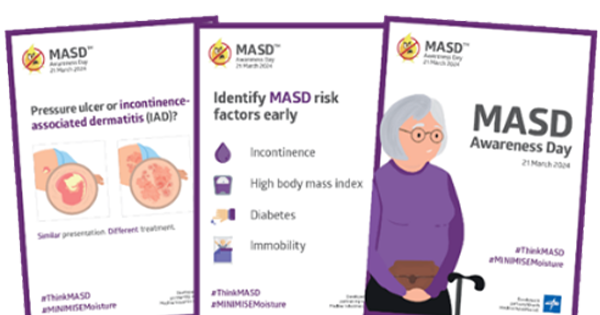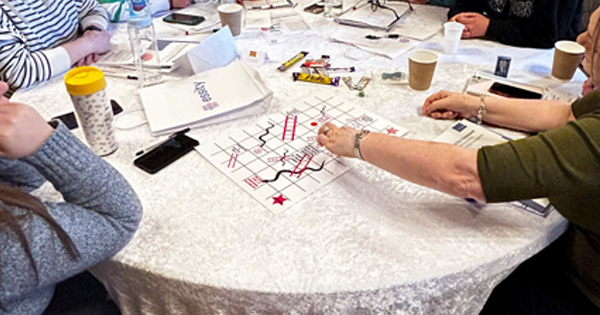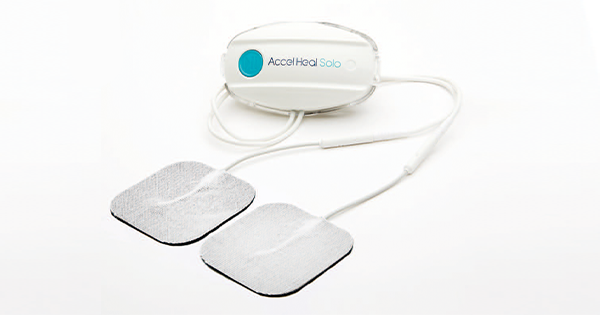Wound care presents an increasingly complex challenge for healthcare systems across the globe. In the UK, the NHS manages approximately 3.8 million chronic wounds annually — a figure that continues to rise by 12% each year and represents around 7% of the adult population (Guest et al, 2017). This increased prevalence has largely been driven by an ageing population, alongside a concurrent rise in comorbidities (Wounds UK, 2021).
Despite the increased occurrence and complexity of wounds, there remains a significant knowledge gap in wound care among healthcare professionals in the UK, with recent studies highlighting challenges in the appropriate management of chronic wounds, as well as a lack of consistent education and training in advanced wound care techniques (Welsh, 2018). Addressing these gaps in knowledge requires an approach to education that is practical, accessible, and engaging.
In response to this demand, Flen Health began to support the organisation of educational days for healthcare practitioners. Throughout 2024, Flen Health held nine regional wound care roadshows across the UK and the Republic of Ireland. Guided by local tissue viability teams, these events provided a unique opportunity to assess the impact of targeted education on clinician knowledge and confidence in wound care.
The Economic and human cost of chronic wounds
The economic impact of wound care is substantial. Managing chronic wounds costs the NHS nearly £10 billion annually (Harding and Queen, 2024).
While wound care products account for only 6% of this expenditure, over 70% can be attributed to healthcare practitioner visits (Guest et al, 2020), making this a critical area of focus to reduce the overall burden of wound care. Notably, 81% of wound care costs occur in community settings, highlighting the significant pressure on district and practice nurses (Guest et al, 2020).
Beyond the economic impact, chronic wounds can significantly affect quality of life, causing pain, restricting mobility, and increasing social isolation. Earlier identification, thorough assessment and holistic wound management can help combat not only the financial burden for healthcare providers but also alleviate the cost to the patient, which is primarily their quality of life.
Barriers to effective wound care education and practice
A 2018 baseline audit for the Wound Assessment Commissioning for Quality and Innovation (CQUIN) revealed that:
- Fewer than 10% of patients received a structured wound assessment
- Nearly 50% of wounds lacked documented evidence of healing progression
- Rates of inappropriate dressing use exceeded 30%.
Furthermore, between 2012 and 2018, demand for district and community nurse visits increased by nearly 400%, while the number of specialist Tissue Viability Nurses (TVNs) declined (Guest et al, 2020). This has resulted in many generalist nurses finding themselves managing complex wounds with limited specialist support and formal training.
Advancing wound care through industry collaboration
With many healthcare trusts already overstretched and lacking necessary resources, a number of challenges can arise when organising independent educational events.
Collaboration between healthcare professionals and industry partners can help bridge these resource gaps by supporting the organisation of high-quality wound care educational events.
This is a topic that aligns with broader educational reforms, such as those outlined in the Tri-Partite Agreement for Undergraduate Medical Education, which highlights the value of partnerships between healthcare providers and industry to enhance education and ultimately improve patient care (Health Education England, 2024).
One of the tissue viability nurses involved in many of the Flen Health roadshows emphasised the benefits of leveraging these partnerships:
“Collaborating with industry partners can prove to be an asset, bringing many benefits and opportunities. Industry representatives supply helpful awareness of new products and technologies that can support better wound care practices. Their participation also helps to ensure that product information is relevant and reflects the latest advice and guidance on how to use their products.”
They added: “Whilst there are challenges, such as balancing commercial interests with unbiased, evidence-based education, I think the Flen Health roadshows have got it spot on!”
The Impact of the Flen Health Roadshows
In 2024, a total of 700 healthcare professionals attended the Flen Health roadshows across the UK and the Republic of Ireland. To evaluate their impact, attendees were invited to complete pre- and post-event surveys via Typeform.
A QR code linking to an anonymous online survey was displayed at the beginning and end of each study day and participants were asked, “How would you rate your knowledge in wound care currently?”. They were prompted to rate their knowledge on a scale from 1 to 10, with 1 being little knowledge and 10 being very confident in the subject area.
A total of 352 participants provided feedback and ratings given prior to the roadshows were compared with ratings at the end of the study days. The results demonstrated significant improvements in self-assessed knowledge across all locations:
- London (22nd May): 6.5 to 8.3 (+28%) n = 31
- Waterford (29th May): 5.5 to 7.9 (+44%) n = 66
- Birmingham (20th June): 6.3 to 7.7 (+22%) n = 13
- Coventry and Warwickshire (16th July): 5.9 to 7.7 (+30.5%) n = 80
- Cardiff (19th September): 5.5 to 7.6 (+38%) n = 42
- Northampton (2nd October): 5.8 to 8.3 (+43%) n = 63
- Lothian (10th October): 5.4 to 7.9 (+46%) n = 57 [Figure 1]
In addition to quantitative data, qualitative feedback highlighted high engagement levels, with attendees noting the practical relevance of sessions.
“The activity session was great. It helped to test and solidify what we learned throughout the day.”
“I loved the quiz at the end. There was a great mix of educational content.”
This sentiment was reinforced by tissue viability teams involved in the roadshows. “Feedback was overwhelmingly positive, with many highlighting how the roadshows increased their knowledge and confidence in managing complex wounds. With industry providing funding, venues, and organisation, the education itself remains solely in the hands of specialist clinicians, ensuring it was truly impartial.”
“There was so much energy in the room, and we managed to get really interesting case studies from HCPs, many of whom said they were excited to go back and utilise their new knowledge after the event.”
Bridging the gap between learning and practice
It is important to remember that education goes beyond simply delivering information, which is why bringing interactive and practical elements into training has been a vital part of the roadshows.
The tissue viability teams, together with guest speakers and Flen Health, organised activities aligned with the key learning objectives [Box 1]. One of the tissue viability nurses reflected on her experience with wound care education, stating, “Throughout my career, I’ve had the privilege of participating in various training and educational events. These experiences have been invaluable in shaping my approach to teaching clinicians about wound care. I’ve observed the positive changes that better education can bring to clinical practice.”
She emphasised the importance of tailoring education to different skill sets and incorporating interactive, engaging elements to make learning both enjoyable and relevant, and keep the audience engaged throughout the day.
“When I am asked to deliver a presentation to clinicians, my first thought is: how can I make this more interesting and interactive and get people’s brains ticking! I usually start by thinking of a game I have played recently or perhaps an idea I have seen on social media. Interactive learning not only makes education fun but also reinforces key knowledge and skills.”
The national roadshow in Birmingham featured an escape room activity that had been used for several smaller educational days and received great feedback from participants [Figure 2].
In many areas of health care, reinforcement of the fundamentals is key to promoting best practice. One of the key opinion leaders working closely with Flen Health shared her thoughts on this. “In my opinion, there is still a need for — and value in — education that focuses on the basics, such as pressure ulcer grading. It is something people struggle to get their heads around, but the challenge is to find new and interesting ways to make an ‘old’ topic engaging.”
“When providing wound care education, we want to ensure we are reinforcing basic practices while also helping clinicians address new challenges they are facing, such as supporting self-care in an aging population.”
A holistic perspective of wound care
One of the key themes emphasised throughout the roadshows was the importance of holistic wound management and the need to consider the whole of the patient during treatment, rather than solely focusing on their wound.
At the first roadshow of 2024, a patient and their parent came to speak about their experiences undergoing years of wound management. The purpose of this talk was to provide an alternative perspective on wound care and bring to light the challenges of wound management from the point of view of a patient and their family.
The involvement of patients and families highlighted and reinforced that wound management encompasses more than just the wound itself, and understanding patient priorities and social circumstances is key to planning care.
Equipping clinicians with the knowledge to assess and manage wounds more effectively helps ensure wounds, and complications that can arise, are recognised early and treatment can be tailored to the individual needs of the patient, ultimately improving patient outcomes and enhancing quality of life.
Working with local trusts
Working closely with local tissue viability nurse teams was a critical aspect of planning the roadshows. Guidance from the trusts ensured agendas aligned with the local needs and priorities of healthcare teams in these regions.
One of the tissue viability nurses closely involved in a variety of educational events, including several of Flen Health’s roadshows, highlighted the critical role of education in wound care, stating: “Education plays a critical role by ensuring that clinicians are well-informed and confident in their wound care practices, as well as reducing complications and improving standardisation of care. Effective education empowers staff to make informed decisions and use evidence-based approaches in the care they deliver.”
Another key opinion leader emphasised the importance of ensuring educational days provide value and respond to the needs of those working in within different trusts, noting, “There are many specialities competing for the attention of clinicians, and staff have very little time to attend events outside of work, so any study event offered needs to be appealing enough for them to use up their limited study leave or, in some cases, come in their own time.”
“We must continue working on this as specialists, in partnership with industry, to ensure the care we provide remains of the highest standard and that all clinicians, regardless of their workplace or experience, have access to high-quality education.”
The effectiveness of face-to-face versus online learning in wound care education
The COVID-19 pandemic accelerated the shift towards digital learning platforms in many fields, including wound care. Whilst the flexibility and convenience of online platforms have made learning more accessible to healthcare professionals, education provided only through digital means lacks some of the key benefits that accompany in-person education.
As emphasised by one tissue viability lead nurse: “While online learning is certainly a valuable tool, I believe that face-to-face education is critical in wound care. It allows for real-time communication, hands-on practice, and a more personalised learning environment.” The ability to involve the audience and offer real-time guidance significantly enhances the learning experience.
Another clinician involved with various aspects of the Flen Health roadshows remarked: “After providing regular full-day teaching sessions on pressure ulcer grading, prevention, and treatment via Teams, being supported to provide an in-person event was so refreshing and a completely different experience.” They went on to explain, “There was so much more engagement, and I felt more confident that my teaching was providing value to those who attended the event.”
Face-to-face education also promotes networking opportunities and peer-to-peer learning, enabling clinicians to exchange insights and perspectives, and deepen their understanding of aspects of wound care they may not usually be exposed to.
Looking ahead to 2025 and beyond
With the burden of chronic wounds continuing to grow, education remains one of the most powerful tools to improve patient outcomes, maintain best practice and tackle the rising demand for wound management services.
The success of the 2024 wound care roadshows demonstrated the benefits of interactive and tailored training for clinicians. By bridging knowledge gaps and reinforcing best practice, educational initiatives like these can help healthcare professionals deliver more effective, patient-centred care. Collaborating with industry partners has been shown to be an effective approach to achieve this.
As healthcare systems face growing pressures, one thing remains clear: ensuring access to high-quality education for healthcare professionals is not just advantageous but essential to ensure better patient outcomes and enhance the efficiency of wound management.

